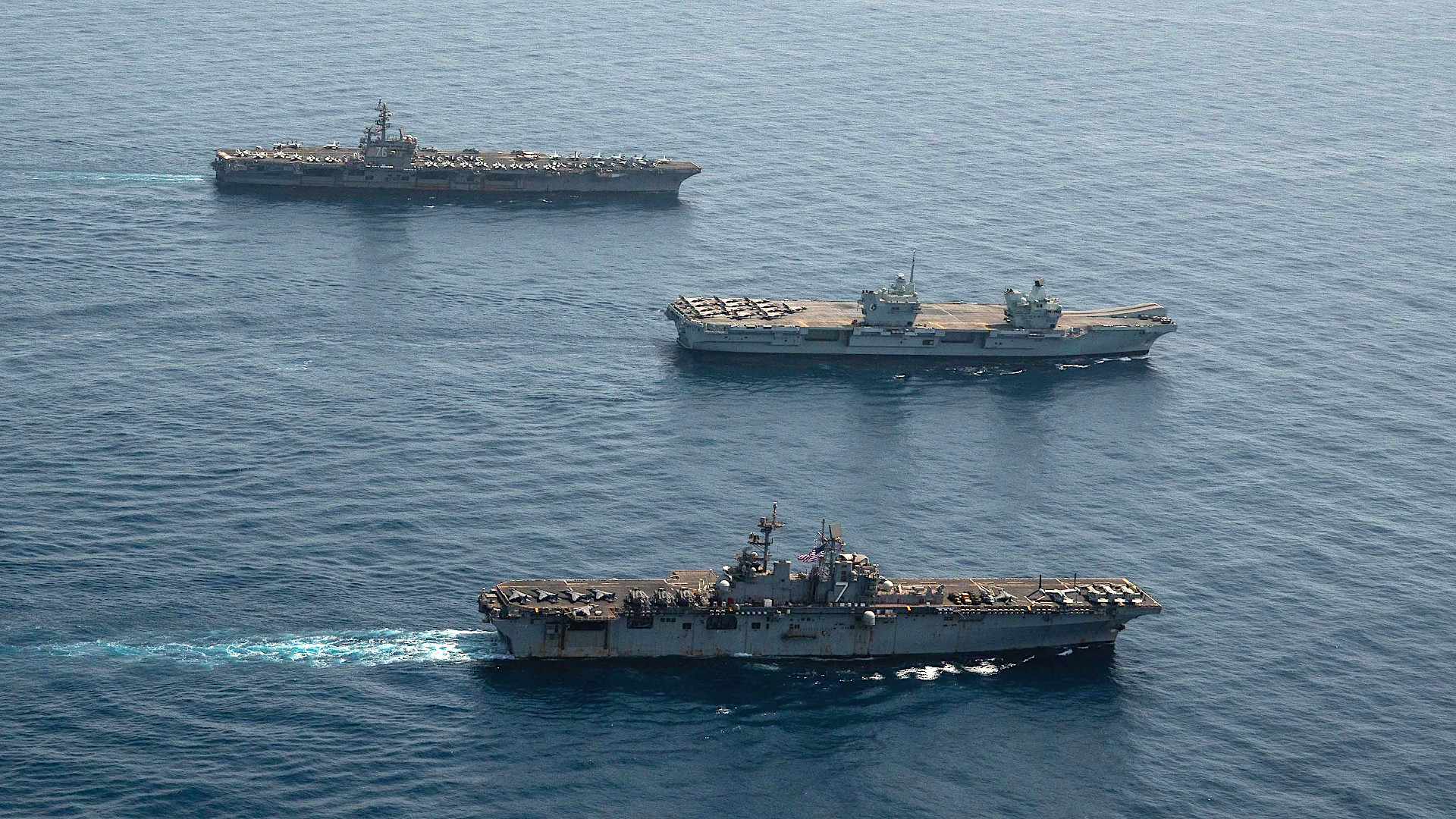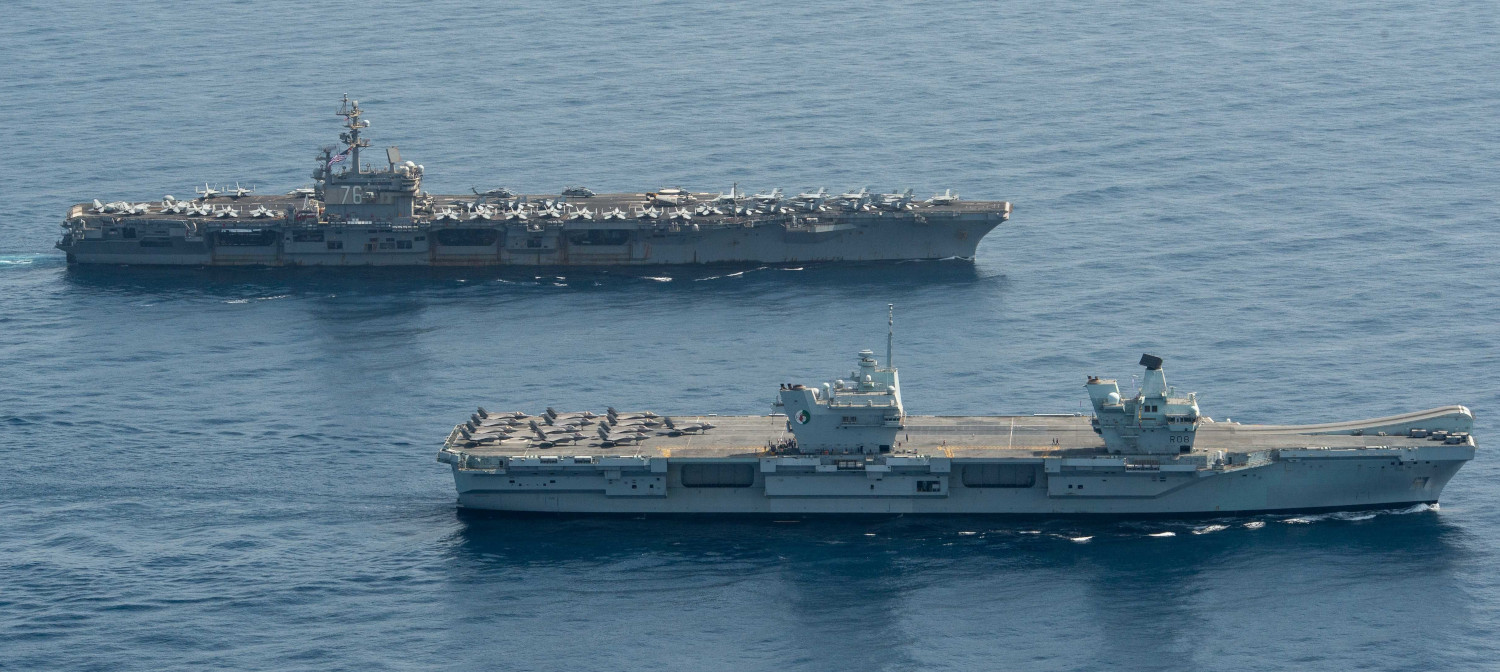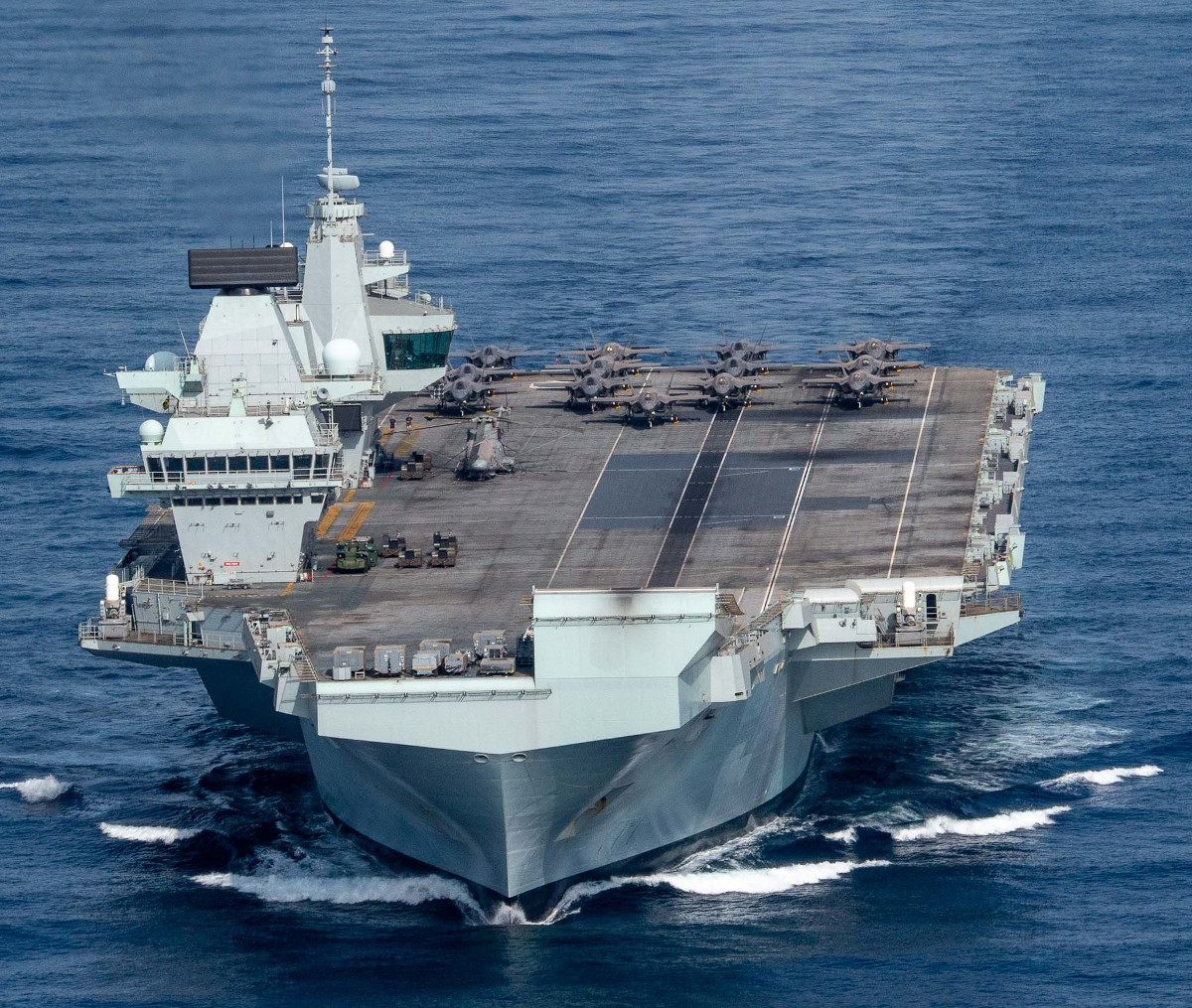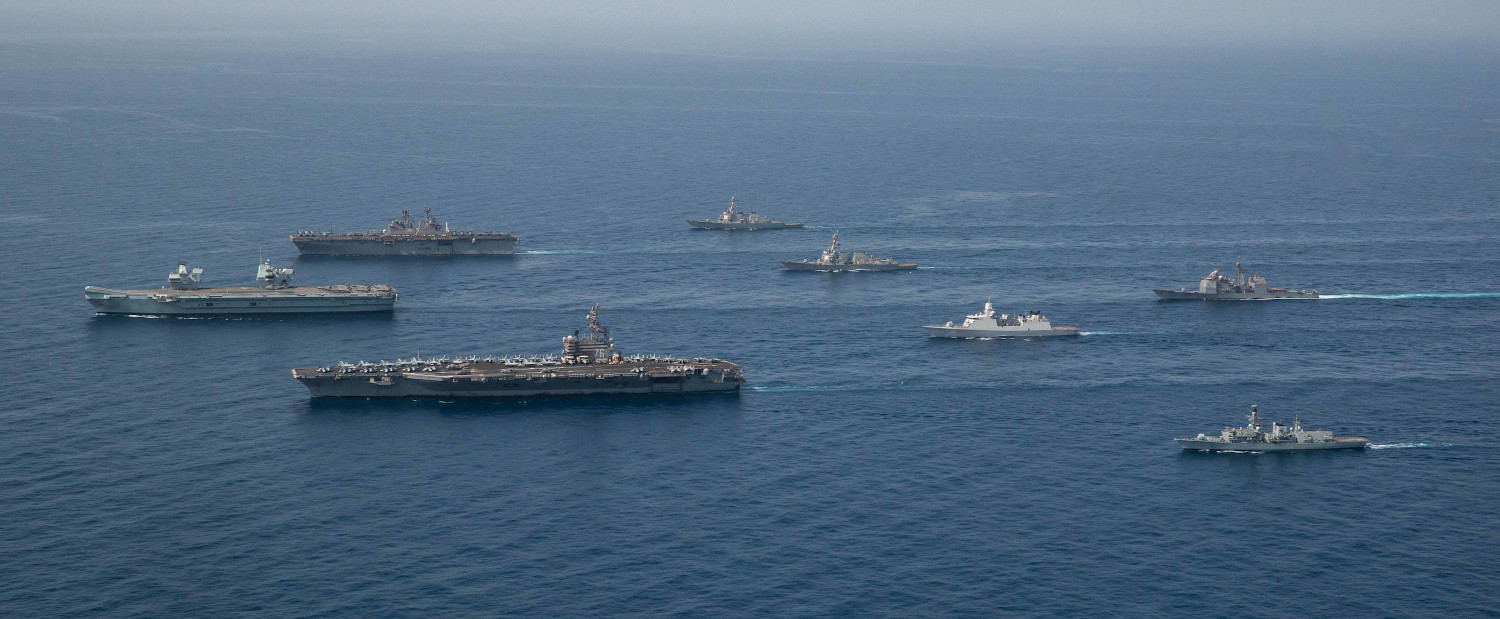The U.K. Royal Navy’s aircraft carrier HMS Queen Elizabeth linked up with one of her American counterparts, the Nimitz class USS Ronald Reagan, as well as the Wasp class amphibious assault ship USS Iwo Jima, among other warships, for a large force exercise in the Gulf of Aden today. This was a major demonstration of allied naval power in a body of water that forms a maritime crossroads between a number of strategically significant areas.
The U.S. Navy’s Arleigh Burke class destroyers USS The Sullivans and USS Halsey and its Ticonderoga class cruiser USS Shiloh, as well as the Dutch De Zeven Provinciën class frigate HNLMS Evertsen, also took part in the drills. Evertsen
is accompanying the Queen Elizabeth on her maiden operational cruise as part of the U.K.-led multi-national Carrier Strike Group 21 (CSG21). U.S. Marine Corps F-35B Joint Strike Fighters are also embarked on the British carrier, along with U.K. Royal air Force F-35Bs and Royal Navy Merlin helicopters.

“Our team was proud to operate alongside the UK Carrier Strike Group during this unique opportunity to hone the full scope of our mutual capabilities,” U.S. Navy Rear Admiral Will Pennington, commander of the Ronald Reagan Carrier Strike Group and Task Force 50, said in a statement. “By operating together at sea, we deepen our coalition partnerships and extend our global reach throughout the region’s critical waterways.”
“The aircraft carrier is the ultimate expression of global maritime power,” U.K. Royal Navy Commodore Steve Moorhouse, commander of CSG21, added. “Queen Elizabeth, Ronald Reagan, and Iwo Jima symbolize the might of the U.S. and UK partnership, and the ease with which our naval and air forces can combine here in the Gulf of Aden, or anywhere else in the world.”
This is actually the second time that CSG21 has worked together with Iwo Jima during this deployment, with the two ships and others taking part in another exercise in the Atlantic Ocean in May. Queen Elizabeth has also trained with a Nimitz class carrier before, the USS George H.W. Bush, as part of another drill in the Atlantic back in 2017.

“Participating forces focused on the full spectrum of maritime warfare operations, practicing anti-air warfare (AAW), anti-surface warfare (ASUW), and anti-submarine warfare (ASW) tactics and procedures,” according to an official Navy news item. “The crews exercised their abilities to conduct precision maneuvering, hunt simulated enemy submarines, provide layered defense against simulated air and surface threats, and conduct long range maritime strikes against simulated adversarial forces.”
All of these missions sets are relevant for aircraft carriers and their strike groups operating anywhere in the world, but are particularly applicable in the Gulf of Aden and surrounding bodies of water. The Gulf of Aden links to the Red Sea, which is situated to the west through the highly strategic Bab Al Mandeb Strait. The Indian Ocean lies the east of the strait. Yemen to the north and Somalia to the south are major hotspots in their own right. Houthi rebels in Yemen have notably attacked ships belonging to a Saudi Arabian-led coalition, as well as U.S. Navy warships, with anti-ship cruise missiles and remote-controlled explosive-laden boats in recent years, causing casualties and serious damage to vessels in some instances.
From the Gulf of Aden, ships can sail north through the Red Sea to the Mediterranean, via the South Canal. Queen Elizabeth just came from that region, where she launched F-35Bs on combat missions in support of the U.S.-led coalition fighting ISIS in Iraq and Syria. The ships of CSG21 also played a game of cat-and-mouse with Russian warships and warplanes, including Tu-22M3 bombers and MiG-31K combat jets armed with anti-ship and hypersonic missiles, respectively. The Mediterranean is notably a hotbed of submarine activity, as well.

Continuing east from the Gulf of Aden would take Queen Elizabeth and the rest of CSG21 into the Arabian Sea. Ronald Reagan, which is forward-deployed in Japan and recently began a rare deployment to the Middle East, had been operating in the North Arabian Sea to help provide cover for the ongoing U.S. withdrawal from Afghanistan. U.S. officials said last week that this drawdown is already more than 90 percent complete.
In May, First Sea Lord Admiral Tony Radakin, the Royal Navy’s top officer, talked about how Queen Elizabeth could, in principle, launch F-35Bs into Afghanistan from the North Arabian Sea, which would require them to fly over Pakistan, but it’s unclear if any such strikes are in CSG21’s future. Last week, U.K. Prime Minister Boris Johnson disclosed that the majority of British forces in Afghanistan had also departed the country.

Queen Elizabeth will eventually continue on to the Indo-Pacific region. There the carrier and the rest of CSG21 will almost certainly integrate again with warships from the United States, as well as the United Kingdom’s other allies and partners. Many of those countries have already been stepping their own naval activity across this broad part of the world with a particular eye toward challenging China’s vast and almost universally disputed territorial claims and increasing general regional influence.
Just today, the U.S. Navy denied that Chinese forces had chased the Arleigh Burke class destroyer USS Benfold away from the waters around the Paracel Islands in the South China Sea, which authorities in Beijing claim almost all of despite competing claims from other countries. This so-called Freedom of Navigation Patrol (FONOP) came on the occasion of the fifth anniversary of a ruling from the international Permanent Court of Arbitration in The Netherlands rejecting Chinese claims to the bulk of the South China Sea. There has been much discussion already about whether Queen Elizabeth or other ships from CSG21 will take part in their own FONOPs around Chinese-claimed areas in the Pacific.
Regardless, Queen Elizabeth joining Ronald Reagan and Iwo Jima, as well as the other ships, in the Gulf of Aden underscores how the Royal Navy is likely to conduct carrier operations in many cases in the future, broadly, as part of larger multi-national coalitions. This could be beneficial for the United Kingdom, which has a limited number of surface escorts with which form its own independent carrier strike groups, and for allies looking to bolster their own naval aviation capacity during combined operations. As already noted, the entire task force that took part in this exercise today presented an impressive display of shared naval power.

All told, the exercise in the Gulf of Aden is another significant milestone in the Queen Elizabeth‘s first operational deployment, but it won’t be the last.
Contact the author: joe@thedrive.com
